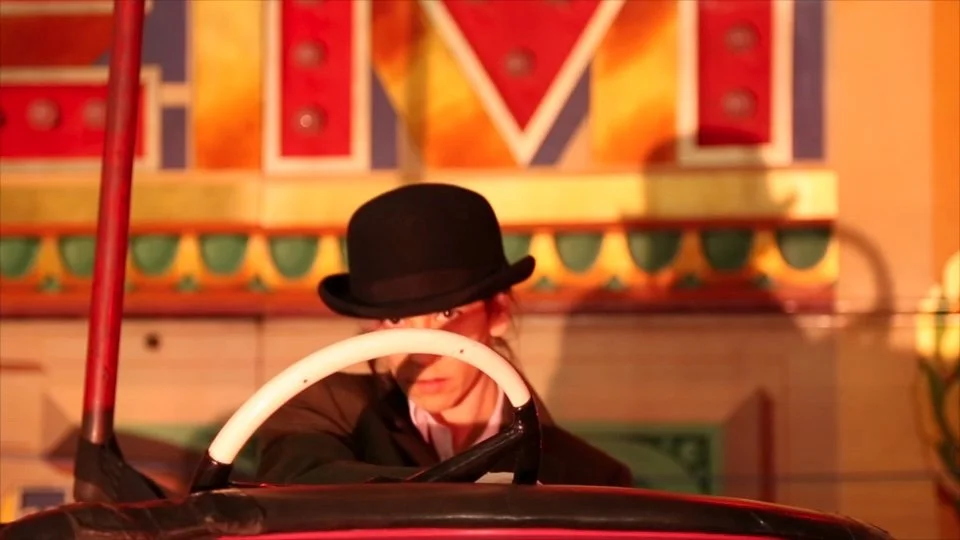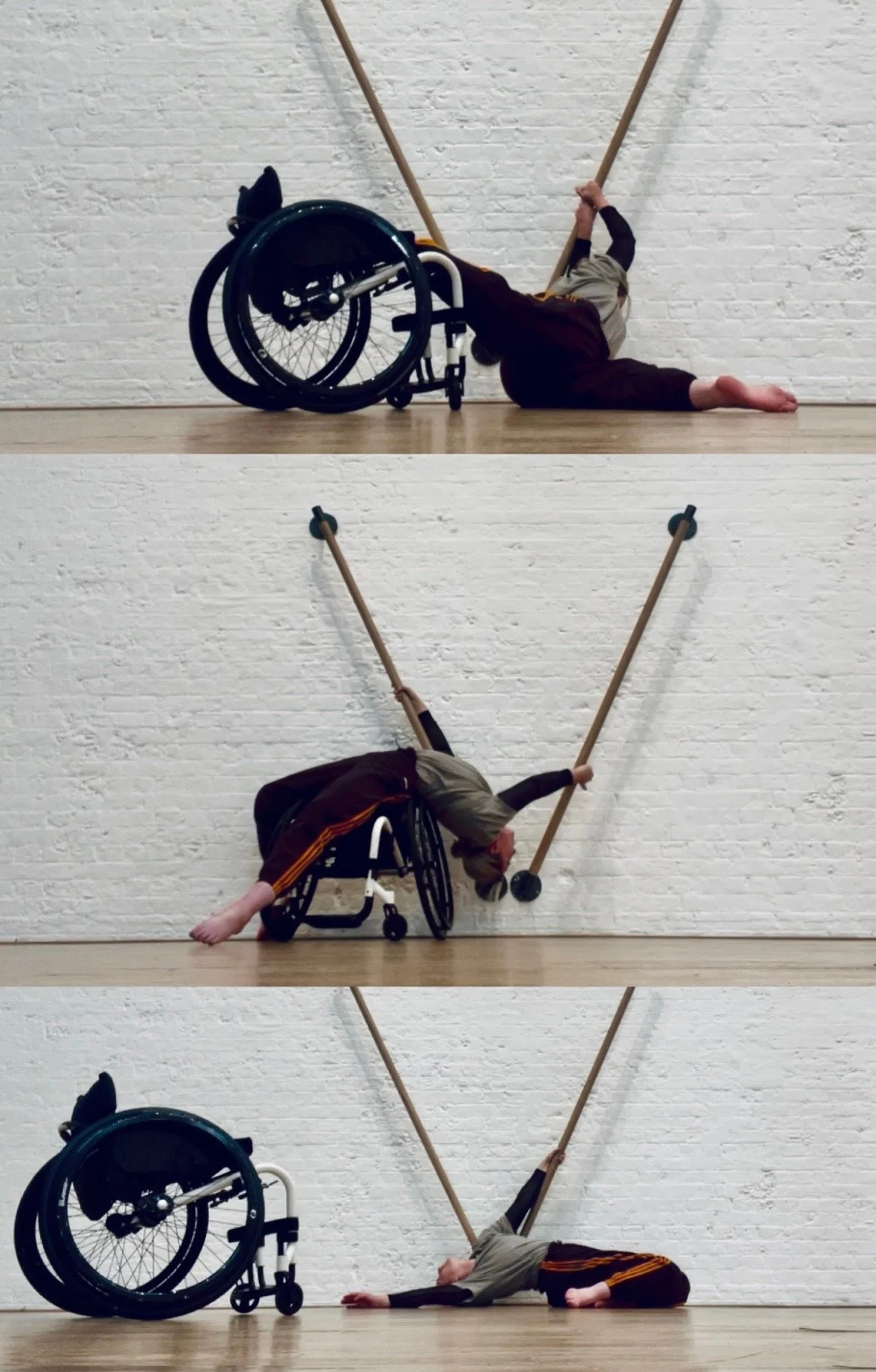An Espresso with Jane Castree: Dance Artist on Movement and Community
Published: October 13, 2025 | Interview by Romina Provenzi | 5 min read
Jane Castree portrait, Dance Artist
Jane Castree is a British dance artist based in Oxford whose practice explores the intersection of movement, art spaces, and community engagement. With training from the London Contemporary Dance School and an MA in Choreography from Dartington College of the Arts, Castree has developed a distinctive approach that combines technical dance training with cross-disciplinary research. Her work challenges traditional boundaries between dance and visual art, often performing within gallery spaces rather than conventional theatres. Recently, Castree created new works for the summer exhibition 'Movements to stay alive' at Modern Art Oxford, continuing her investigation of how bodies move within art environments and how movement can invite diverse audiences into participatory experiences. In this conversation, Jane discusses her background as a dance artist, how she engages with art spaces differently from traditional performance venues, and the themes that drive her practice—from creating work that combines depth of research with accessible audience connections to exploring where different art forms meet. Castree delivers workshops at the Bullingdon Community Centre in Wood Farm, Oxford, regularly.
Background as a Dance Artist
You have recently created new works for the summer exhibition ‘Movements to stay alive’ at Modern Art Oxford. What’s your background as a dance artist?
I trained as a dancer at the London Contemporary Dance School, which offers highly technical and skilled dance training. After graduating, I pursued an MA in Choreography at the Dartington College of the Arts, which provides a more avant-garde environment. There, students from different creative disciplines attend joint sessions in addition to those in their subject. It was essential for me to train in these two distinct environments, such as LCDS and Dartington, because I wanted to develop a practice that combines depth of research with connections to audiences on multiple levels.
Working Within Art Spaces
How does your work connect with art spaces?
I’m keen on cross-disciplinary work and on exploring where different art forms meet. In terms of art spaces, I did projects in art galleries, which meant performing in the gallery in front of an artist’s work. Instead, Modern Art Oxford offered me the opportunity to create my own work for their exhibition, which was exciting for me. Initially, I researched how to encourage people to move within an art space and to think about moving their bodies in different ways, without myself being present to support them. Then I wanted to invite and help the visitors to move in many ways as I would do if I were present, and added elements of design, like symbols and objects, to facilitate that.
Themes in Practice: Embodiment and Community
What are the themes that you explore in your work?
For the 2025 summer exhibition ‘Movements to stay alive’ at Modern Art Oxford, my work examined the body from different perspectives. I began experimenting with film, as it allows for viewing the movements from a variety of angles while providing a safer kind of relationship with the audience. It was fascinating to observe how the body looks entirely different when making shifts. For example, in ballet, everything is designed from a particular angle to make the feet appear beautiful and elegant, with a distinct line, but for one of my projects, I watched them from the angle of the underside of the feet, and it showed a different narrative. In other projects, I work with community groups to create cohesion, like in an area on the outskirts of Oxford. The participants come together because they are in a similar age group and they live in the same neighbourhood, but they have different lives and very different viewpoints, which require many facilitation skills for working with the group dynamics. Some days, I might set for them an improvisational task, such as making basic movements like circles, and this physical work enables a variety of people to be in a space together. During the physical work, it happens that people change their perspective about what they can do and what they can't do, which is self-reflective and helps them and everyone else in the space. Despite the different opinions about how to do things in the space, it helps to look at them from a different perspective to create cohesion. There's a respected space where we can listen to others and be part of, even if everybody doesn't agree with each other.
Reflections on This Conversation
Speaking with Jane revealed the rich possibilities that emerge when dance practice extends beyond traditional theater spaces into galleries and community settings. Her approach to movement as a tool for breaking down structures and creating unexpected moments of connection offers a compelling model for participatory art practices.
Three key insights:
Cross-disciplinary training matters: Combining technical rigour (London Contemporary Dance School) with avant-garde experimentation (Dartington) created the foundation for Jane's unique practice
Art spaces offer different possibilities: Working in galleries rather than theatres opens up new ways for audiences to engage with movement on their own terms
Community work enriches professional practice: The feedback loop between participatory projects and personal dance practice creates surprising insights that inform both
Jane's work demonstrates how dance can become a vehicle for exploring embodiment, accessibility, and those magical moments when conventional structures break down, and something unexpected emerges.
‘Movements to Stay Alive’ summer exhibtion 2025 at Modern Art Oxford
‘Movements to Stay Alive’ summer exhibtion 2025 at Modern Art Oxford
If you enjoyed this interview, you might also like my interviews with other artists like:
Performance artist Florence Peake published in Sculpture magazine
Marina Abramovic on the Marina Abramovic Institute Takeover at the SouthBank Centre on Elephant magazine
“An Espresso with…” ongoing series of interviews to female artists
Explore more conversations in my Portfolio or subscribe to receive new interviews monthly




